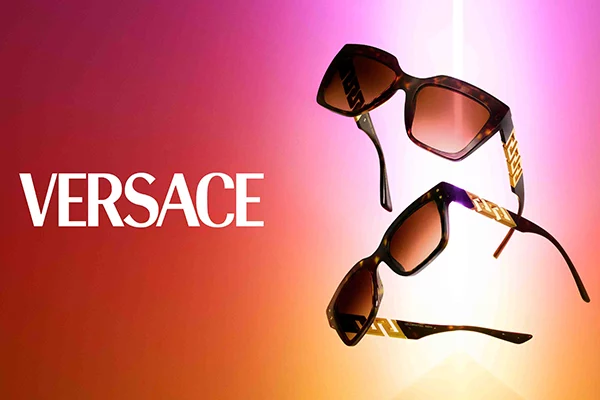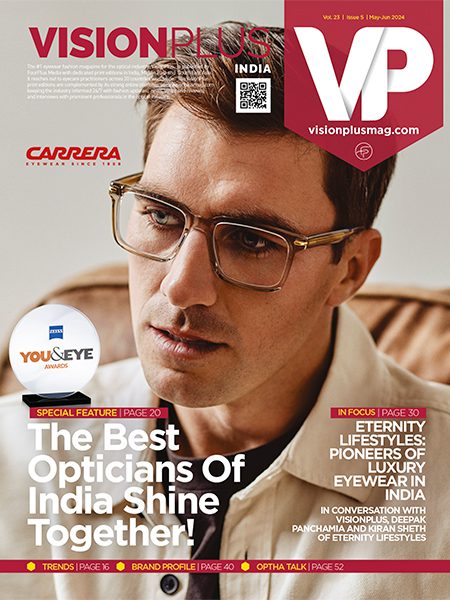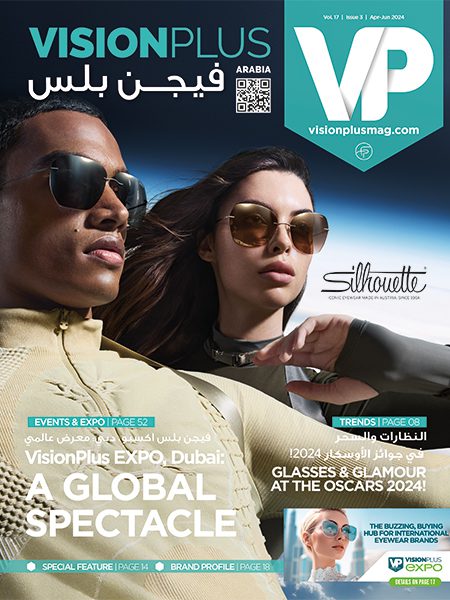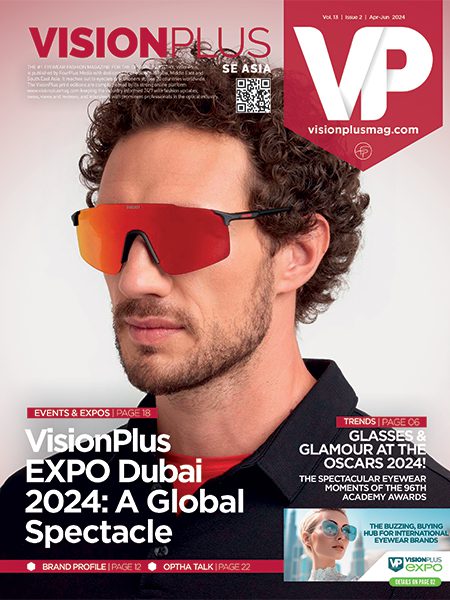A lens is incomplete without the appropriate coating on its surface. In this article we will discuss two types of spectacle lens coatings available and their benefits.
 Coating is a feature of the lens that can increase wearer’s satisfaction, enhance optical properties and improve cosmetic attributes of the lens.
Coating is a feature of the lens that can increase wearer’s satisfaction, enhance optical properties and improve cosmetic attributes of the lens.
In the last one-decade Ophthalmic lens coatings have evolved in several dimensions resulting in better and better transmission thereby making lenses more invisible. Research also advances in offering protection with the help of these coatings and added a wide range of product options in the scope of Blue Light Protection and much needed UV protection.
Click on the above image to view the article’s flipbook edition
Let’s discuss Scratch resistant coating and ARC coating in the article below:
Scratch-Resistant Coatings (SRCs)
Because of the tendency of plastic lenses to scratch more easily than glass lenses, manufacturers have developed processes of coating the plastic lens to develop more surface hardness and thus more resistance to scratching.
SRC lenses are not specifically designed to reduce lens reflections. SRC plastic lenses, however, do exhibit some reduction of lens reflections. This means that they will have a higher light transmission compared with a non- SRC lens or an Uncoated lens.
Scratch-resistant coatings are also called anti-scratch coatings or hard coatings. In trade you may find this coating with several names such as Titus, Titanium or simply Hard Coat.
But then this was not enough. An uncoated CR-39 plastic lens transmits about 92% of the incident light. By adding an Scratch Resistant Coating to the lens, transmission may increase to just short of 96% but that still annoys the wearer and also makes eye contact difficult.
Especially in the age of selfie who would want to have hidden eyes by the flashlight. So Hard Coat, as Scratch Resistant Coatings are also referred to, is good to make lenses durable and scratch resistant but Anti Reflection Coating is an essential option to offer your customers today.


An AR coating is a thin, clear layer or layers applied to the surface of a lens. Its purpose is to:
(1) reduce unwanted reflections from the lens surface and
(2) increase the amount of light that passes through the lens to the eye.
Let us now first understand the cause of reflections
Spectacle lenses are manufactured using lens material, as raw material we use plastic (CR-39 or Polycarbonate) or mineral glass (not so common nowadays) as lens material.
Each lens material has got few inherent properties like refractive index, impact resistance, abbe value and density and lens behaviour wherein when light passes through the lens some get lost or reflected and rest of transmitted. This reflected light causes annoyance and it happens on both the front and back surface.
Most of the available lens materials can transmit up to 92% of light whereas the remaining 8% gets reflected. This reflection is 50% higher in High index lens material.
Which means High index material can reflect upto 12% and may go upto 14.1% thereby reducing transmission by another 4% – 6%, leaving 85.9% transmitted.
A good ARC can improve transmission upto 98% to 99% and modern-day ARC coating is developed with much higher strength and it doesn’t get scratched easily.
The Theory of Antireflection Coatings : A Brief Introduction
According to optical theory, for a single-layer AR coating to reduce reflections, an AR coating must meet two conditions: the path condition and the amplitude condition.
The Path Condition: Very simply stated, the path condition determines what the optical thickness of a single-layer coating film must be. To achieve the desired effect, the film must be either one fourth of a wavelength (i.e., one fourth, three fourths, five fourths, and so forth).


As light strikes the single layer–coated lens surface, some of the light will reflect from the coating surface and some from the lens surface. This causes the two reflected waves of light to be out of phase with each other, causing destructive interference and preventing reflection.
The Amplitude Condition: The amplitude condition requires that the amplitude of the light waves in the lens material and in the film be equal. This is required so that the destructive interference of the two reflected waves will be complete, where the two sine waves combine to form the zeroed-out straight line.
The distance from the top to the bottom of the wave must be the same. This can be achieved by controlling the index of refraction of the film.
But Single-Layer Anti Reflection Coatings are not 100% effective and hence what you see and dispense is always multi-layer ARC.
Multi – layer ARC and arrangements of its layer also results in another attribute of the coating and referred to as color of the coating. Green HMC or Blue ARC are such examples.
But the options in ARC coating are evolving day by day and that has made ARC, a subject much deeper to study and critical while accessing which one is the right option for your consumers.
In the next article we will cover types of ARC and selection criteria based on consumer profile.












